Lifelong reduction in complex IV induces tissue-specific metabolic effects but does not reduce lifespan or healthspan in mice
- PMID: 29696791
- PMCID: PMC6052393
- DOI: 10.1111/acel.12769
Lifelong reduction in complex IV induces tissue-specific metabolic effects but does not reduce lifespan or healthspan in mice
Abstract
Loss of SURF1, a Complex IV assembly protein, was reported to increase lifespan in mice despite dramatically lower cytochrome oxidase (COX) activity. Consistent with this, our previous studies found advantageous changes in metabolism (reduced adiposity, increased insulin sensitivity, and mitochondrial biogenesis) in Surf1-/- mice. The lack of deleterious phenotypes in Surf1-/- mice is contrary to the hypothesis that mitochondrial dysfunction contributes to aging. We found only a modest (nonsignificant) extension of lifespan (7% median, 16% maximum) and no change in healthspan indices in Surf1-/- vs. Surf1+/+ mice despite substantial decreases in COX activity (22%-87% across tissues). Dietary restriction (DR) increased median lifespan in both Surf1+/+ and Surf1-/- mice (36% and 19%, respectively). We measured gene expression, metabolites, and targeted expression of key metabolic proteins in adipose tissue, liver, and brain in Surf1+/+ and Surf1-/- mice. Gene expression was differentially regulated in a tissue-specific manner. Many proteins and metabolites are downregulated in Surf1-/- adipose tissue and reversed by DR, while in brain, most metabolites that changed were elevated in Surf1-/- mice. Finally, mitochondrial unfolded protein response (UPRmt )-associated proteins were not uniformly altered by age or genotype, suggesting the UPRmt is not a key player in aging or in response to reduced COX activity. While the changes in gene expression and metabolism may represent compensatory responses to mitochondrial stress, the important outcome of this study is that lifespan and healthspan are not compromised in Surf1-/- mice, suggesting that not all mitochondrial deficiencies are a critical determinant of lifespan.
Keywords: SURF1; cytochrome c oxidase; dietary restriction; lifespan; mitochondria; mitochondrial unfolded protein response.
© 2018 The Authors. Aging Cell published by the Anatomical Society and John Wiley & Sons Ltd.
Figures
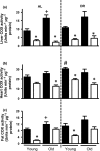
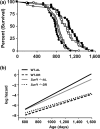
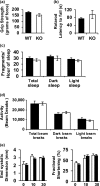
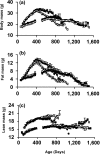
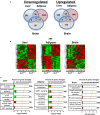

References
-
- Deepa, S. S. , Pulliam, D. , Hill, S. , Shi, Y. , Walsh, M. E. , Salmon, A. , … Van Remmen, H. (2013). Improved insulin sensitivity associated with reduced mitochondrial complex IV assembly and activity. Federation of American Societies for Experimental Biology Journal, 27(4), 1371–1380. 10.1096/fj.12-221879. - DOI - PubMed
Publication types
MeSH terms
Substances
Grants and funding
LinkOut - more resources
Full Text Sources
Other Literature Sources
Molecular Biology Databases

